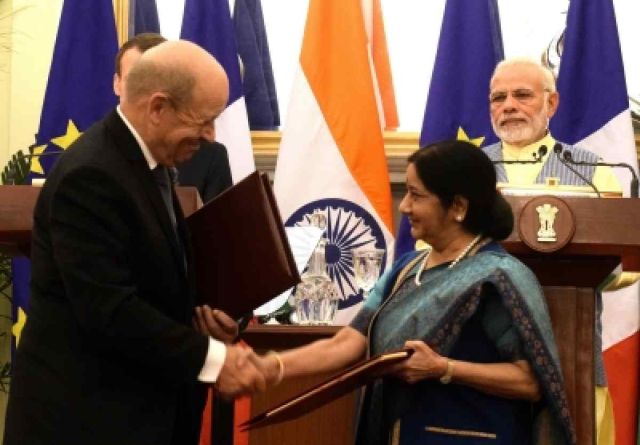
by Editor | May 25, 2021 | Corporate, Corporate Governance
 New Delhi : With China’s increasing presence in the Indian Ocean Region, India and France on Saturday announced broadbasing of their ties through a joint strategic vision for cooperation in the region that agreed on the need to establish an open, inclusive and transparent cooperation architecture for peace, security and prosperity there.
New Delhi : With China’s increasing presence in the Indian Ocean Region, India and France on Saturday announced broadbasing of their ties through a joint strategic vision for cooperation in the region that agreed on the need to establish an open, inclusive and transparent cooperation architecture for peace, security and prosperity there.
After talks between visiting French President Emmanuel Macron and Prime Minister Narendra Modi, the two sides also signed 14 agreements, including one that prescribes the way forward for the implementation of the Jaitapur nuclear power plant.
In a nine-page joint statement issued after the talks, the two countries reiterated their strong condemnation of terrorism in all its forms and manifestations, including cross-border terrorism and terror incidents in France and India.
They also called upon all countries to work towards rooting out terrorist safe havens and infrastructure, disrupting terrorist networks and their financing channels and halting cross-border movement of terrorists like Al Qaeda, Daesh/ISIS, Jaish-e-Mohammed, Hizbul Mujahideen, Lashkar-eTayabba and their affliates as well as terrorist groups threatening peace and security in South Asia and the Sahel region.
With Modi by his side, Macron told media persons that both France and India are giving a new momentum to their strategic partnership against terror. “We will fight together radicalism and terrorism,” he said.
According to the joint strategic vision document, India and France shared concerns over the emerging challenges in the Indian Ocean Region that include maritime traffic security in the face of the threats of terrorism and piracy, especially in the Horn of Africa, and respect of international law by all states, in particular freedom of navigation and overflight, among others.
This can be seen as a strong signal to China given its attempts to increase its footprint in the region.
“Both of us agree that the Indian Ocean region will play a significant role in the future for the peace, prosperity and development of the world,” Modi said while addressing the media along with Macron after the talks.
“Whether it be environment, maritime security and resources, freedom of navigation or overflight, we are committed to strengthening our cooperation,” he stated.
Though France is not against the recently revived quad of India, the US, Japan and Australia that seeks to work for peace and prosperity in the Indo-Pacific region, Paris would rather like to work with New Delhi bilaterally in the Indian Ocean Region given that there are around two million French citizens in its territories in the region.
According to the joint strategic vision document, such cooperation between the two sides will help in harnessing the opportunities and meeting the challenges together in the Indian Ocean Region.
“The two leaders are desirous of associating other strategic partners in the growing cooperation between India and France, as and when required and, in this regard, would establish trilateral dialogues,” the document stated.
“They also agreed on the need to establish an open, inclusive and transparent cooperation architecture, with the aim of delivering to all associated with the region, peace, security and prosperity.”
Modi and Macron decided that both countries would strengthen coordination in existing regional and international bodies to carry out this objective.
“India welcomes the prospect of France’s enhanced participation at the Indian Ocean Rim Association (IORA). France congratulates India on its leadership at IORA and the Indian Ocean Naval Symposium (IONS),” document said.
It stated that both countries will be open to inviting strategic partner countries in the region to participate in Indo-French exercises.
Among the agreements signed was a memorandum of understanding between the Indian Space Research Organisation (ISRO) and the National Centre for Space Studies (CNES) of France aimed at co-developing a maritime surveillance satellite system focused on the Indian Ocean and related data fusion mechanisms. This system would significantly strengthen maritime domain awareness in the Indian Ocean region.
The two countries also released a joint vision on space cooperation which envisages, among others, addressing global challenges, including climate change and exploring the solar system and beyond.
According to the joint statement, both sides “agreed to enhance operational cooperation between the Indian and French counter-terrorism agencies and launch a new cooperation effort to prevent and fight radicalisation, in particular online”.
With the Nuclear Power Corporation of India and French firm EDF signing the agreement on the way forward for implementation of the Jaitapur nuclear power plant, the joint statement said that the two leaders welcomed the understanding shared by the two parties on the enforcement of India’s rules and regulations on Civil Liability for Nuclear Damages applicable to the Jaitapur project.
Stating that there is a long history of cooperation in defence, security, space and high technology, Modi, in his address to the media, said there is bipartisan support in both countries on the bilateral relationship.
“We share a deep defence relationship and we see France as one of our most trusted partners in this area,” he said.
“All services of our defence forces regularly hold discussions and conduct joint exercises. We have strong ties in defence equipment and production. We welcome France’s commitment to Make in India in the defence sector.”
Modi also said that people-to-people ties, especially among the youth, are the most important dimension for the bright future of the bilateral relationship.
“We want our youth to know, see, understand, live, and work in each other’s countries so that thousands of ambassadors emerge in the process,” he said.
For this, he said, two agreements were signed following Saturday’s talks — one on mutual recognition of academic qualifications and the other on mobility and migration partnership.
Among the other agreements signed were those on cooperation on high speed and semi-high speed rail, sustainable urban development and credit facility of 100 million euros for funding of smart city projects.
Earlier on Saturday, Macron was accorded a ceremonial welcome at Rashtrapati Bhavan here following which he told the assembled media that France should be the best partner for India and the entry point to Europe.
External Affairs Minister Sushma Swaraj also called on the visiting dignitary and discussed ways to deepen the Startegic Partnership the two countries share.
Following the bilateral talks, Modi and Macron interacted with CEOs of India and France to take the partnership forward at the CEO’s Forum.
There are around 1,000 French companies operating in India with over $7 billion in investments.
Macron, who arrived here on Friday on a four-day visit to India, will on Sunday co-chair with Modi the founding conference of the International Solar Alliance (ISA) that was launched by the Indian Prime Minister and then French President Francois Hollande during the Paris climate summit in 2015
The ISA is conceived as a coalition of solar resource-rich countries to address their special energy needs and provide a platform to collaborate on dealing with the identified gaps through a common, agreed approach.
—IANS
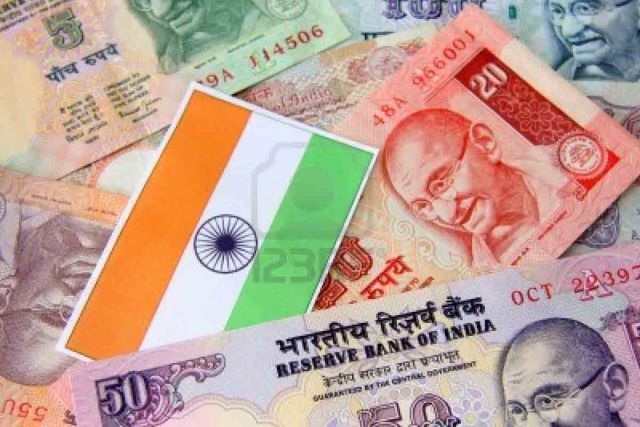
by Editor | May 25, 2021 | Opinions
 By Amit Kapoor,
By Amit Kapoor,
The usual brouhaha around the Budget strips the Economic Survey of the attention it deserves. The Survey document, especially since Arvind Subramanian has taken over as the Chief Economic Advisor, has consistently pushed the envelope on economic thinking, providing exciting new insights for the Indian economy. The latest one, released three days before the Budget, introduced a new phrase into economic jargon: The “late convergence stall”. It is a phenomenon that the Survey fears might affect the growth process of the developing world.
The basic argument is this. Economic convergence, which is the process of low-income countries catching up with richer ones in standards of living, has been taking place over the last few decades at an accelerated pace; something which economists like to call “convergence with a vengeance”. To be precise, countries were on a divergence path before 1997, a period of convergence from 1998 till the financial crisis in 2008 and an era of accelerated convergence post-crisis.
However, with changing global economic scenarios, it might be more and more difficult for developing countries to narrow the gap. In other words, the economies that have been rapidly climbing up the economic ladder might face a “late convergence stall”.
The threat of a convergence stall might result from the development of four challenges that were non-existent during the formative stages of the developed world. The first and the most crucial one is the end of rapid globalisation that benefitted the East Asian economies and even China. High levels of export growth rates of these countries have been drivers of their economic growth stories.
Developing nations that are late to the global scene cannot expect to achieve such export levels in the current inward-looking shifts in trade policy, especially across the developed world.
Subramanian always remains careful in stating that it is the era of “hyper-globalisation” (or rapid globalisation) which has come to an end, and not globalisation per se. However, globalisation, if defined as a period when trade among nations is growing faster than the global GDP growth, can be seen to be growing rapidly from 1950 till a few years after the economic crisis of 2008. During this period, growth in trade was close to five per cent while growth in world GDP was close to four per cent.
After 2010, growth in world trade levels has fallen below GDP growth, marking an era of de-globalisation (3.5 per cent economic growth against global trade growth of 2 per cent). Therefore, even though the Survey takes a conservative approach in claiming that globalisation has come to an end, the data shows that the world is, in fact, de-globalising.
It can be the case such low levels of trade might not hold once the world economic growth is running in full throttle, but the fact of the matter remains that the developing world cannot reap the same gains that were received in the later part of the 20th century. This could bring about the historical divergence that world economies had experienced throughout much of modern economic history. This trend was famously evidenced by Harvard’s Lant Pritchett in his paper “Divergence, Big Time” in which he showed that between 1870 and 1990, the richest and poorest countries have shown considerable divergence between their per capita incomes. Therefore, the convergence has only been a recent phenomenon. It would not be a surprise if it returned.
To make matters worse, other avenues of economic development that had been open earlier are also closing down. While industrial expansion was the most effective means of achieving economic successes for poor economies in the past, high productivity has implied that economies in current times reach the pinnacle of industrial employment much earlier on their growth path.
Turkish economist Dani Rodrik, also from Harvard, calls this “premature deindustrialisation” and shows how most of the developing world is affected by it. Therefore, resources which earlier used to shift from the low-productivity informal sector to high-productivity jobs, now usually shift to sectors that are only marginally more productive. The economic gains from a shift of labour across sectors are thus not derived to an extent that was true for the countries that are now high up on the income spectrum.
The case for a slowing down of convergence or divergence is, therefore, quite strong. The developing world needs to be prepared for any such restoration of the past economic trend. The advent of automation and similar technological innovations will further accentuate the problem because the richer countries will be more capable of deploying them for production on a mass scale. It is comforting to realise that the Indian government is well aware of the threat in advance, but it remains to be seen if this awareness is followed up with appropriate policy action.
The Economic Survey gets it right in recommending rapid improvements in human capital to sustain growth at current levels, but takes a defeatist approach in suggesting that India can do very little about diminishing globalisation. On the contrary, there remains immense scope for the country to play an enabling role in further integration of the global economic order. If the US is currently a lost cause, there remain other large markets like the EU and East Asia where India can further the cause of higher trade openness.
(Amit Kapoor is chair, Institute for Competitiveness, India. The views expressed are personal. He can be contacted at amit.kapoor@competitiveness.in and tweets @kautiliya. Chirag Yadav, researcher at Institute for Competitiveness has contributed to the article)
—IANS
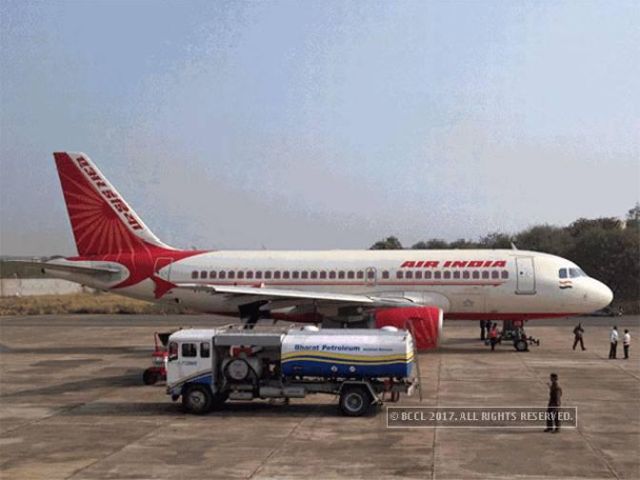
by Editor | May 25, 2021 | Corporate, Corporate Buzz, Muslim World
 Riyadh : Saudi Arabia’s civil aviation authority late Wednesday denied granting permission to Indian planes to use the Kingdom’s airspace to cross into Israel.
Riyadh : Saudi Arabia’s civil aviation authority late Wednesday denied granting permission to Indian planes to use the Kingdom’s airspace to cross into Israel.
A spokesman for the General Authority of Civil Aviation (GACA) in Saudi Arabia that the Authority did not grant any permission to fly Air India, Al Arabiya television reported.
Air India said on Wednesday it plans to begin direct flights to Israel and has proposed they pass through Saudi airspace, a route so far off-limits to Israel-bound commercial planes.
It is noteworthy that Saudi Arabia does not recognize Israel as a state. An Air India spokesman and Israel’s Airports Authority said the state-run carrier had requested slots for three weekly flights between New Delhi and Tel Aviv. The Airports Authority said the service would begin in early March.
Air India was awaiting clearance from the Indian aviation regulator to fly over Saudi Arabia, the spokesman said.
However, Israeli media, in unsourced reports, said Riyadh had granted the necessary flyover rights, which would shorten the flight time from New Delhi by more than two hours.
El Al Israel Airlines, the country’s flag carrier, flies four weekly flights to Mumbai but these take seven hours rather than five as they take a route south toward Ethiopia and then east to India, avoiding Saudi airspace.
Israel’s Tourism Ministry said it will grant Air India 750,000 euros for flying the new route, as part of its policy of increasing the number of airlines flying to Israel.
Air India had made a similar request for slots to Israeli authorities last year but never followed through, after that circumventing Saudi airspace was not economically viable.
It is noteworthy that Indian Foreign Minister Sushma Swaraj is in Riyadh for an official visit.
—AG/UNA-OIC
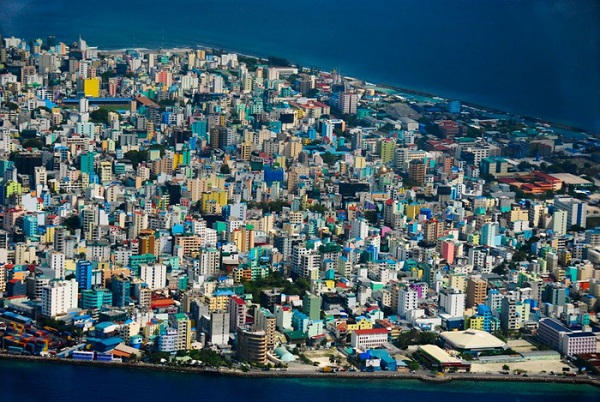
by Editor | May 25, 2021 | Opinions
 By Admiral Arun Prakash (retd),
By Admiral Arun Prakash (retd),
One hopes that Indian diplomats and national-security managers are doing some serious soul-searching about how and why events spun, so swiftly, out of control in neighbouring Maldives.
Given India’s self-assigned role of regional “net security provider”, the Integrated Defence Staff, in New Delhi, must be reviewing their plans for launching what they term an out of area contingency (OOAC) operation, at short notice. Should our military be called upon to render assistance to the Republic of Maldives, this will certainly not be for the first time.
Nearly three decades ago, in November 1988, a group of Maldivian dissidents, led by Abdullah Luthufi, and assisted by armed mercenaries of a Sri Lankan Tamil secessionist group, attempted to overthrow President Abdul Gayoom’s government. Landing in a hijacked merchant ship, the mercenaries gained control of the capital, but failed to capture the President.
Gayoom, who had earlier faced two abortive coups d’état, sent out an urgent appeal for help to the US, the UK and India. Prime Minister Rajiv Gandhi having taken an instant decision, the Indian armed forces had launched “Operation Cactus”, within nine hours of receiving the Maldivian SOS. Paratroops were landed in Hulhule airport by IAF strategic airlifters and soon regained control of the capital Male. Indian warships and naval aircraft undertook a dramatic high-seas chase of the hijacked merchantman and captured the fleeing rebels and mercenaries. The British Prime Minister, Margaret Thatcher, is reported to have commented: “Thank God for India; President Gayoom’s government has been saved.”
Sixteen years later, the Maldives faced another dire emergency; this time, caused by nature’s fury, and put out an urgent appeal for help. The Great Asian Tsunami hit the Maldives on December 26, 2004.
An archipelago of 1,200 coral islands, spanning roughly 115 square miles, Maldives is Asia’s smallest nation, both by area and population (less than half a million inhabitants). Most of Maldives is so low that the tsunami surge sent sea-water sweeping over nearly the entire nation. Again, it was the Indian Navy which reached out to our stricken neighbours, in spite of the catastrophe on India’s own eastern seaboard. Within hours, Indian warships arrived off Male and began to deliver relief by helicopter and boats.
Climate change looms over us, and rising sea levels could lead to similar crises in the future, leading to mass migrations. India’s expeditious response in 2004 was meant to carry reassurance to the Maldivians that they were not alone in their hour of need.
The ongoing political turmoil in Maldives has placed India on the horns of a dilemma. Now, President Abdulla Yameen has not only coerced his country’s Supreme Court into retracting its directive to release political prisoners but also placed the Chief Justice under arrest and declared a state of national emergency. It is possible that he may be within his rights to do all this, and the first round, therefore, goes to him.
However, Mohammad Nasheed, the first democratically elected Maldivian President, currently in exile, termed the declaration of an emergency as being “tantamount to martial law… and illegal and unconstitutional”. He has openly called for India’s diplomatic and military intervention through “physical presence” and this could be seen by many as adequate justification or even an invitation for an attempted “regime change” in the island republic.
But India needs to tread with extreme caution in this sensitive area because the developments, so far, in the Maldives are a domestic issue and remain within the ambit of the nation’s “internal affairs”. Both conventional wisdom and recent experience confirm that foreign-imposed regime changes, overt or covert, are doomed to failure. They not only fail to attain the objectives for which they are undertaken, i.e., improvement in bilateral relations, but invariably lead to domestic resentment and bitter opposition to the foreign-imposed leader. India needs to wait and watch how the Maldivian public and world opinion react to developments, before deciding its course of action.
What also needs to be kept in mind is a Chinese statement on Wednesday indirectly cautioning India against intervening in the Maldives, saying any outside “interference” in the country’s political crisis would “complicate” the situation. China also denied allegations that Maldivian President Abdullah Yameen had its backing and said Beijing follows the principles of non-interference in other countries’ domestic affairs.
“The current situation in the Maldives is its internal affair. It should be properly resolved through dialogue and consultation by relevant parties,” said a Chinese Foreign Ministry spokesperson, adding a veiled warning; “The international community should play a constructive role based on the (principle of) respecting the sovereignty of the Maldives instead of taking actions that may complicate the current situation.”
India, apparently, started to lose the plot in the Maldives in 2012, when the Male airport modernisation contract with the Indian infrastructure giant GMR was aborted by the Maldivian government, which then handed over the project to a Chinese company. Although the subsequent arbitration tribunal held that the agreement was wrongfully repudiated by Maldives, India lost both “face” and influence in the island nation. The resignation of President Nasheed, under duress, the same year, caught India napping and coincided with the substantive rise of Chinese leverage in Maldives. This must be considered yet another failure of Indian diplomacy in our neighbourhood.
As the strategic competition between India and China in the Indian Ocean gathers pace, we must be prepared to face such situations more frequently. Instead of complaining about China’s farsighted maritime enterprises like the Belt & Road Initiative or military enclaves like Gwadar and Djibouti, we need to craft a creative and dynamic strategy to counter them.
After Indian Navy’s sterling performance in the 2004 tsunami relief effort, the island neighbourhood has high expectations of maritime assistance — in terms of hardware, training and security. Denied a corpus, by the Ministry of External Affairs as well as Ministry of Defence, for extending quick assistance to neighbours, the navy has been denuding its own inventory by transferring patrol boats, ships, aircraft and helicopters to boost the security of friendly neighbours and keep them out of the Chinese maw. Such a situation needs to be speedily remedied.
As a post-script, a few statistics related to “time and space” may provoke some thought amongst both Maldivian and Indian decision-makers; not just in the immediate context, but also from a long-term “realpolitik” viewpoint. From Male, the nearest Chinese port, Haikou (Hainan), is 2,700 miles as the crow flies and 3,400 miles by sea. An aircraft would take 7-8 hours to cover this distance, overflying three countries, and a ship would take 8-10 days to reach Male. Compare this to the flying time of just over an hour, and sailing time of a little over 24 hours to cover the 500 miles between Male and the nearest Indian port/airport of Kochi.
(Admiral Arun Prakash is a former Indian Navy chief. The views expressed are personal. He can be contacted at arunp2810@yahoo.com )
—IANS
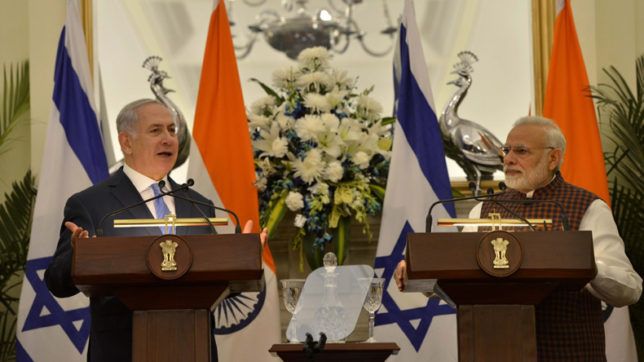
by Editor | May 25, 2021 | Corporate, Corporate Governance, Economy, Entrepreneurship, News, Politics, Startup Basics
 New Delhi : India and Israel on Monday pledged to fight terror as the two countries sought to broadbase their relationship on the silver jubilee of establishment of their diplomatic ties with Prime Minister Narendra Modi inviting Israeli companies to take advantage of the liberalised FDI regime in defence sector and to make more in India.
New Delhi : India and Israel on Monday pledged to fight terror as the two countries sought to broadbase their relationship on the silver jubilee of establishment of their diplomatic ties with Prime Minister Narendra Modi inviting Israeli companies to take advantage of the liberalised FDI regime in defence sector and to make more in India.
The two countries also underlined the the need for working towards Free Trade and Bilateral Investment treaties.
On the second day of his six-day visit to India, Israel Prime Minister Benjamin Netanyahu held talks with Prime Minister Narendra Modi, both one-on-one and delegation level, after which the two sides reached agreements in various fields including a Memorandum of Understanding on Cyber Security Cooperation.
Netanyahu showered praise on Modi saying he is a “revolutionary” leader who has catapulted India into the future.
A joint statement issued later said the two Prime Ministers agreed that renewed efforts were required to realise the full potential for bilateral trade and investment and noted that the next round of bilateral discussions will be held next month in Israel.
The Prime Ministers urged the private sector to actively explore investment opportunities in both countries, including through India’s flagship programmes such as Make in India, Start-Up India and Digital India.
Both sides noted the readiness of Israeli companies to enter into joint ventures with Indian companies in the defence sector under the Make in India initiative. They consider it important to set the direction for developing more business models and partnerships for joint ventures and joint manufacturing including transfer of technology as well as research and development in defence security fields.
Recognising the grave threat terrorism poses to peace and security including from non-state actors, Modi and Netanyahu reiterated that there can be no justification for acts of terror on any grounds whatsoever and advocated strong measures against terrorists, terror organisations, those who sponsor, encourage or finance terrorism or provide sanctuary to terrorists and terror groups.
They also noted with satisfaction that the next meeting of the joint working groups on homeland and public security will he held next month. They reiterated the importance of building comprehensive cooperation in counter-terrorism, including cyber-space and welcomed the signing of the Memorandum of Understanding on Cooperation in Cyber Security between India and Israel.
At a media briefing later, Vijay Gokhale, Secretary (Economic Relations) in the External Affairs Ministry, said both countries shared similarities in their approach to tackling terrorism. “The two countries have said we will not tolerate terrorism in any manner,” he said.
In reply to a question on not naming Pakistan in the document, he said it was not necessary to name countries each time. There was no divergence of views on the issue, he added.
To a question on cancellation by India of a deal with Israel for the purchase of 8,000 Spike anti-tank guided missiles, he said defence cooperation was discussed between the two leaders but he was not in a position to comment beyond that.
On bilateral investment treaty, Gokhale said there was need to negotiate on the issue for a second round of discussions.
At the interaction with the media, Modi said there were three ways of scaling up bilateral partnership. First, he said, it can be done by strengthening the existing pillars of cooperation in agriculture, science and technology and security.
He said the second way of enhancing bilateral cooperation is by “venturing into less explored areas of cooperation, such as oil and gas, cyber security, films, and start-ups”.
“Several of these areas are indicative of our desire to diversify and broad-base engagement,” he said.
The third way, Modi said, to boost ties would be by “facilitating the flow of people and ideas between our geographies”.
“We are working with Israel to make it easier for our people to work and visit each other’s countries, including for longer work durations. To bring people closer on both sides, an Indian Cultural Center will soon open in Israel.”
The Indian Prime Minister also said that both sides have decided to start an annual exchange of bilateral visits by 100 young people from science-related educational streams.
India and Israel signed nine agreements following the talks, including two memorandums of understanding (MoUs) on cooperation in the areas of oil and gas and cyber security, and two letters of intent between Indian Oil and two Israeli entities on metal-air batteries and solar thermal technologies.
On bilateral economic relations, Modi said that “thriving two-way trade and investment is an integral part of our vision for a strong partnership”.
Modi expressed hope and optimism about India-Israel ties, and said: “In Prime Minister Netanyahu, I have a counterpart who is equally committed to taking the India-Israel relationship to soaring new heights.”
Netanyahu said Modi’s historic visit to Israel last July, the first by an Indian Prime Minister, “excited all Israelis and of course many Israelis of Indian descent and origin”.
“Jews in India have never witnessed anti-Semitism like in some other countries,” he stated. “This is a tribute to India’s great civilisation, tolerance and democracy.”
“We remember the horrific savagery in Mumbai (2008 terror attacks), we will never give in and will fight back,” Netanyahu said.
The two sides also discussed the situation in West Asia and UN Security Council reforms but Iran’s nuclear programme did not figure.
The personal chemistry Modi and Netanyahu share was again evident in the address to the media when the two leaders warmly hugged each other.
Earlier on Monday, the Israeli Prime Minister was accorded a ceremonial welcome at the Rashtrapati Bhavan here.
Netanyahu, accompanied by a 130-member business delegation, arrived here on Sunday on a six-day visit to India that will also see him going to Agra, Ahmedabad and Mumbai.
This is the first Prime Ministerial visit from Israel to India in 15 years after that of Ariel Sharon in 2003.
—IANS

 New Delhi : With China’s increasing presence in the Indian Ocean Region, India and France on Saturday announced broadbasing of their ties through a joint strategic vision for cooperation in the region that agreed on the need to establish an open, inclusive and transparent cooperation architecture for peace, security and prosperity there.
New Delhi : With China’s increasing presence in the Indian Ocean Region, India and France on Saturday announced broadbasing of their ties through a joint strategic vision for cooperation in the region that agreed on the need to establish an open, inclusive and transparent cooperation architecture for peace, security and prosperity there.



